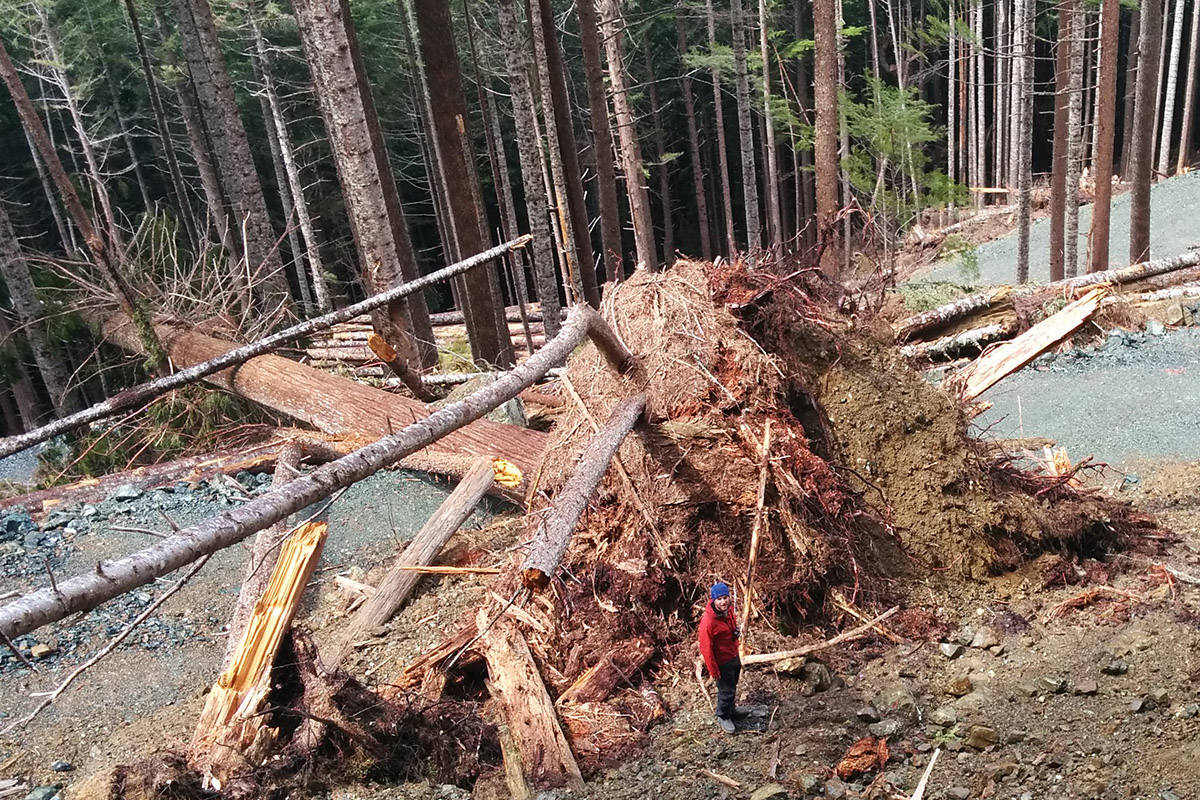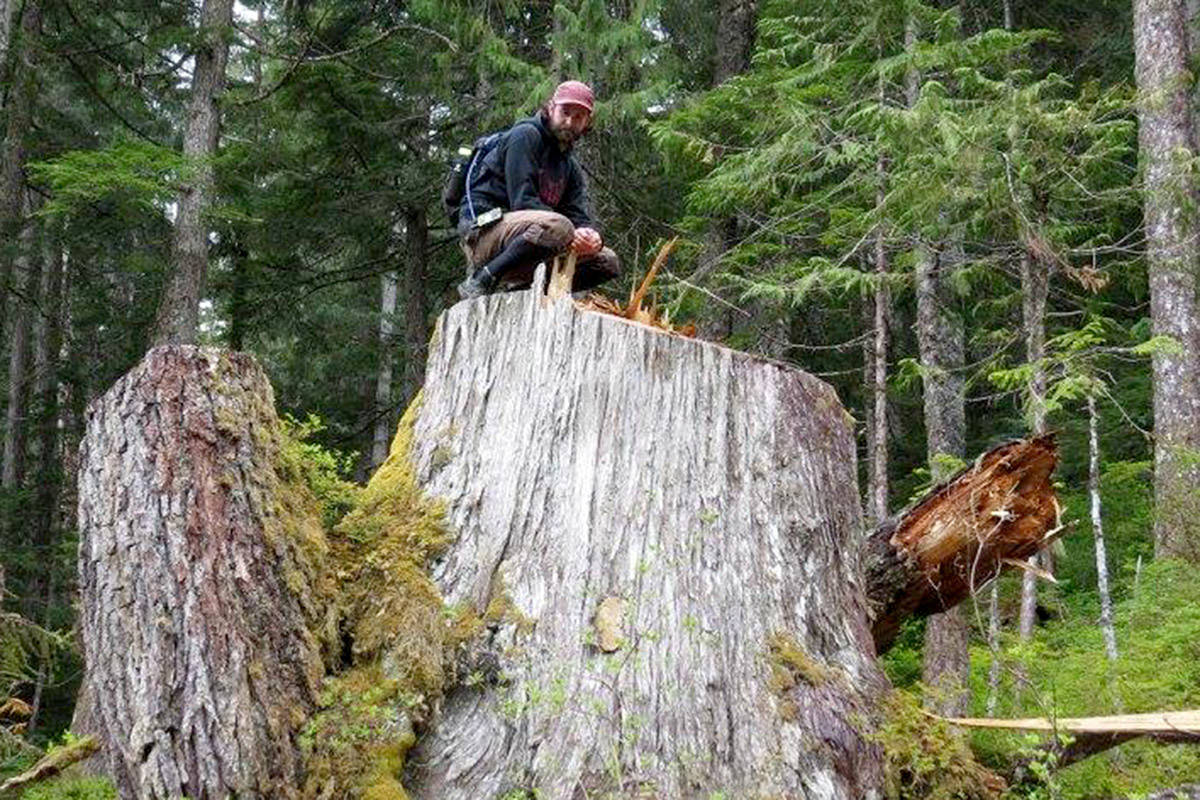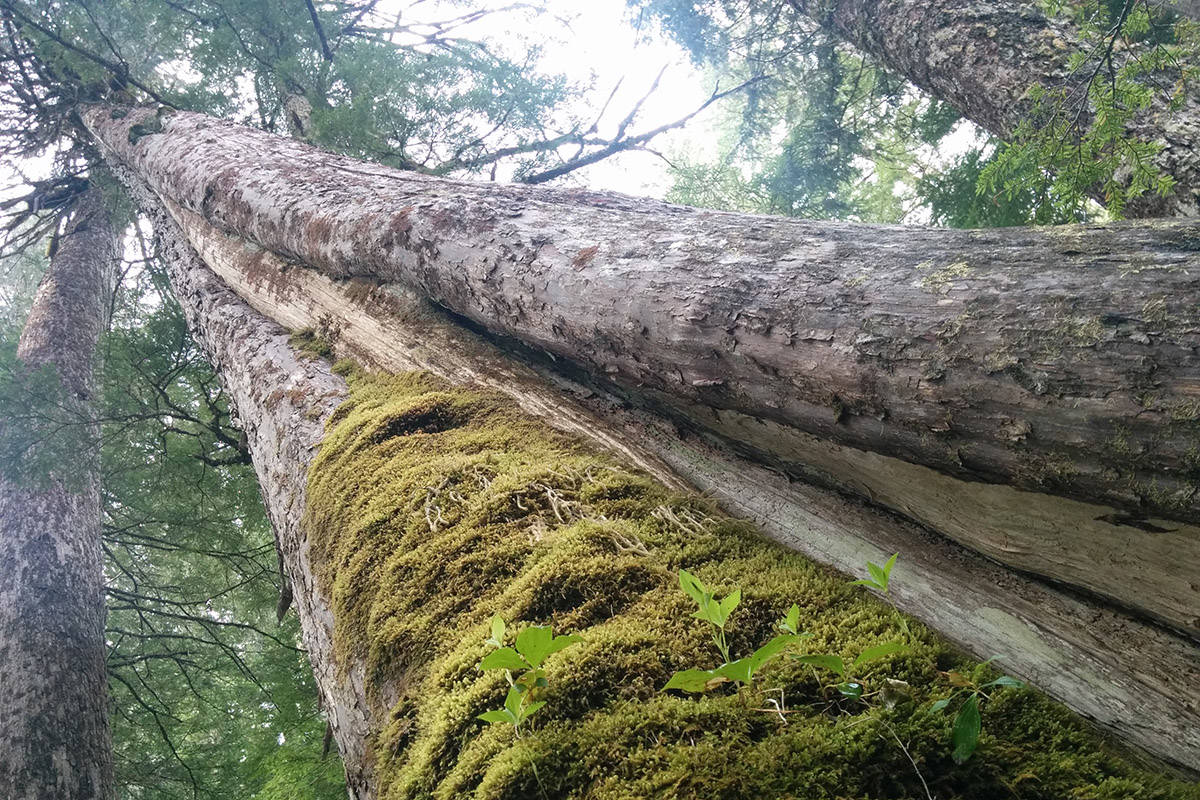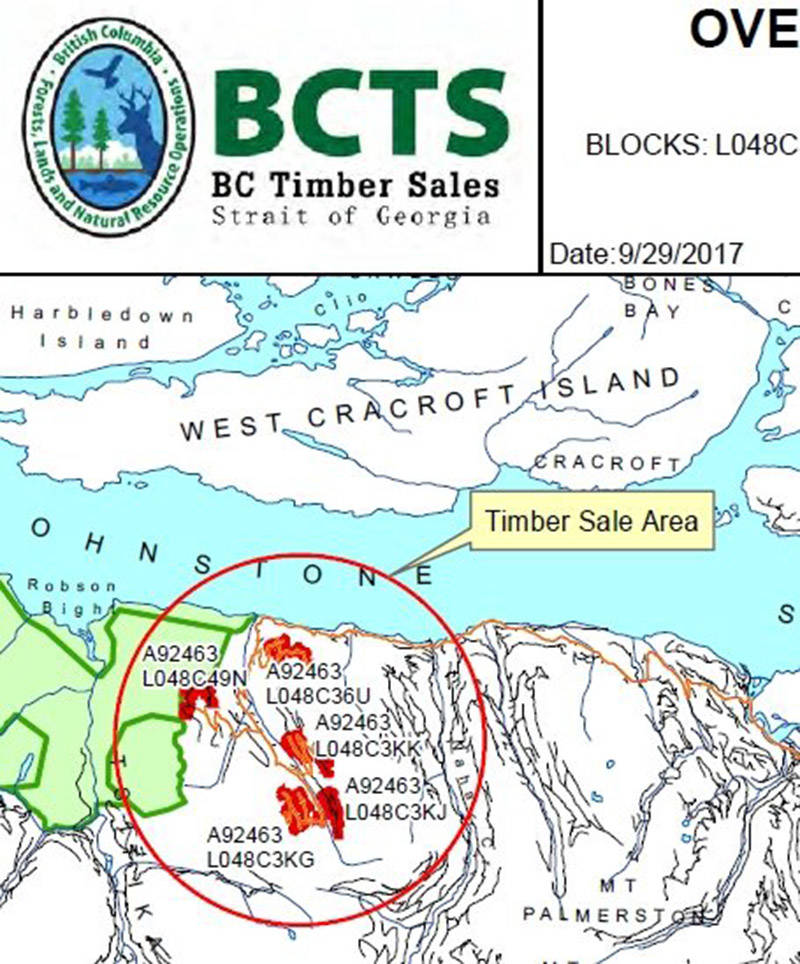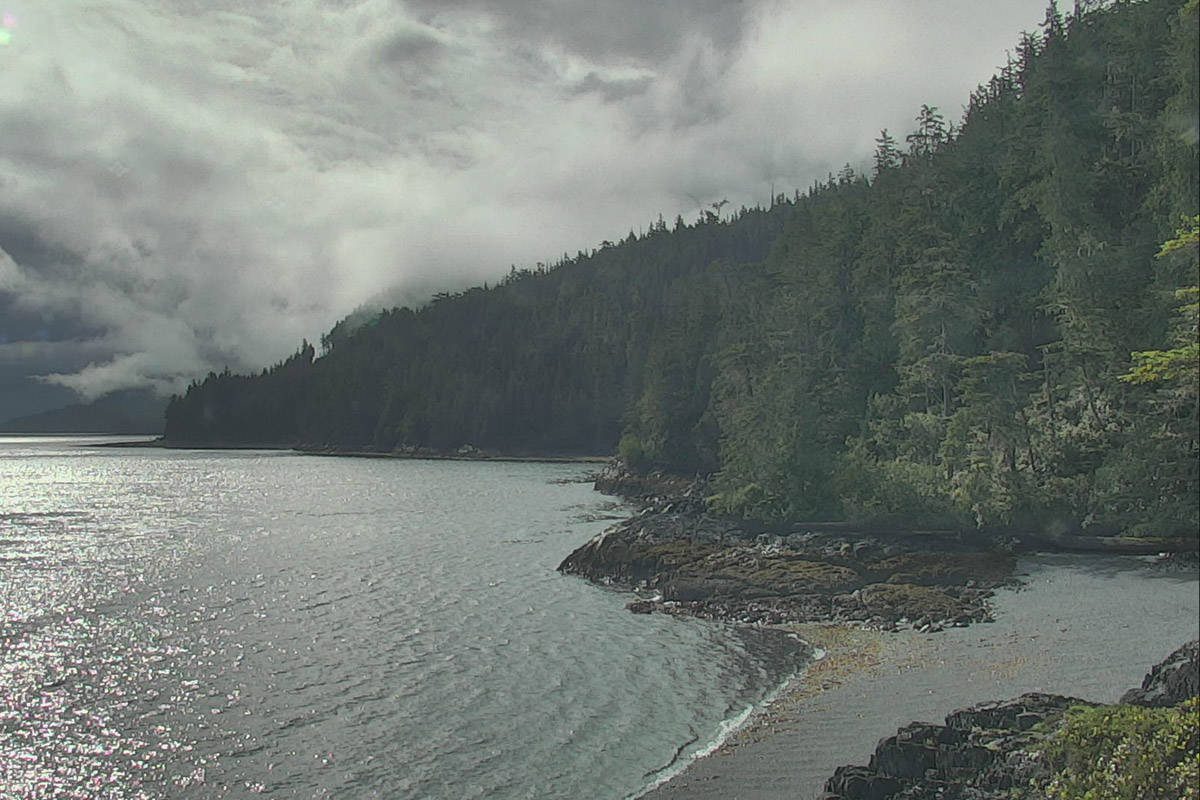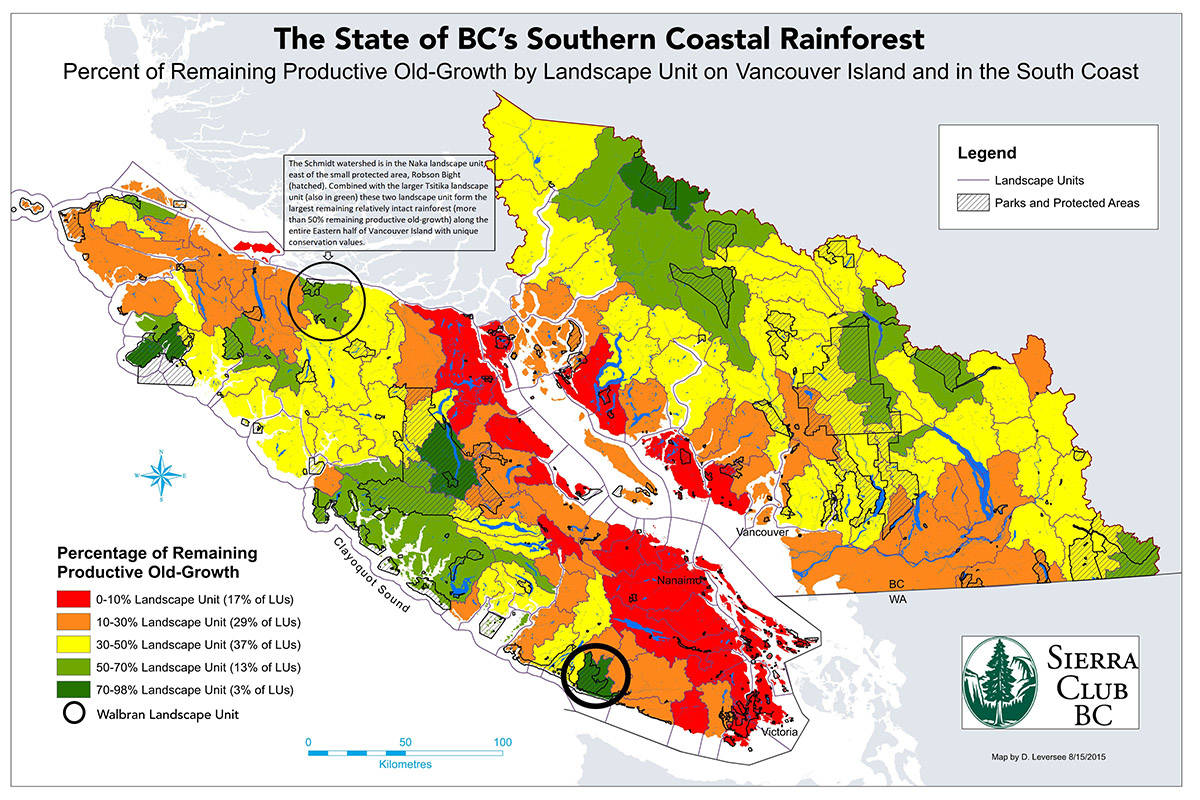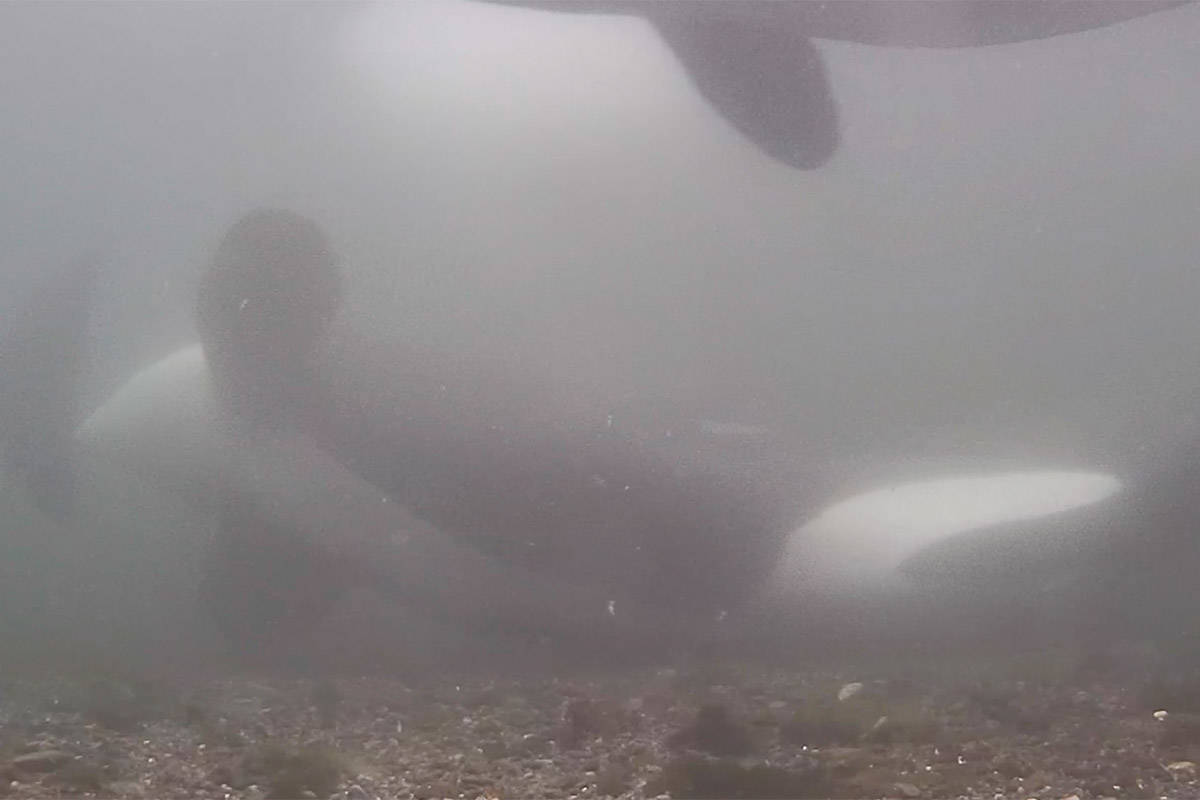Robson Bight may be the world’s most famous orca sanctuary.
Orcas have visited the beaches of the small bay located on Vancouver Island’s northeast coast between Port McNeill and Sayward for perhaps thousands of years to rub their bodies against the smooth pebbles of its shores.
But ecologists and at least one Indigenous chief say that logging in a nearby old-growth forest could destroy those “rubbing beaches,” dealing a significant blow to a population that’s already threatened.
Habitat concerns
The major fear among ecologists — denied by the province and a coalition of area Indigenous groups — is that logging operations will destabilize the hillsides, especially during periods of heavy rainfall, resulting in landslides of debris into Johnstone Strait.
“My concern is that it’s a very steep slope, and I think that it could very well suffer from a landslide,” said longtime whale researcher and ecologist Paul Spong. “And if there’s a serious landslide down Schmidt Creek, it could bring debris and mud and whatnot into the ocean that will end up on the rubbing beaches.”
The rubbing takes place in the Robson Bight Ecological Reserve, part of what Spong considers “critical habitat” for northern resident whales. That means it’s an area recognized as being very important to a population’s survival.
“The ecological reserve is, in a way, the centre of the critical habitat for this population,” he said.
In an article published by Sierra Club BC, Spong said that orcas entering Johnstone Strait often “make a beeline for the rubbing beaches.”
And he added that when the ecological reserve was created in 1982, those beaches were included in recognition of their importance to the whales. It’s crucial to what he described as whale culture.
Spong stressed that “it’s very well recognized in scientific circles, now, that whales have culture.” And rubbing is a custom particular to the northern resident populations.
But quite apart from the preservation of the cultural practices of whales, he said, orcas are important for BC’s tourism industry, and they’re a threatened species. The government should do everything it can to protect them, he said.
“The rubbing beaches and the ecological reserve is one of the key things that brings them back to this area year after year,” he said. “If you take it away from them, you’ll have real impacts on the whales.”
Increased sediment in the watershed will worsen conditions on beaches that are already declining, according to Spong, who is co-director of a whale research station based on Hanson Island called OrcaLab.
“The quality of the rubbing beach has been deteriorating for a number of years,” said Spong.
Parks BC was so concerned about changes underway at the beaches that it carried out a study on the matter, according to Spong. That report is now complete but remains unpublished, he said.
“I think it really behooves the government to hold off on doing anything about logging in Schmidt Creek until they get that report,” he said.
A Parks BC official didn’t reply to a request for information about the study.
Economic benefits
The Ministry of Forests has dismissed Spong’s fears, saying the rubbing beaches aren’t at risk. And a coalition of Indigenous groups that sold the land to B.C. has supported logging at Schmidt Creek, saying it poses little hazard and presents economic opportunities for the region.
The controversy comes after the Nanwakolas Council, which represents several First Nations, sold the logging rights for the area to the government-run BC Timber Sales (BCTS) agency.
Nanwakolas Council president Dallas Smith – a veteran of the movement to protect the forests of the adjacent Tsitika watershed – said the project is a chance for First Nations people to benefit from resource development and stimulate economic activity in the area.
“Forestry is a major driver in the economics of Vancouver Island, and First Nations are finally just getting some real shot at being meaningfully involved in it,” he said, adding that jobs for Indigenous people in the area are at stake.
Smith, whose father is a Tlowitsis chief, participated in the movement to stop logging in the Tsitika Valley when he was still in high school. Later, he played an important role in efforts that led to the Great Bear Rainforest Agreement, which provided the Nanwakolas Council with logging rights at Schmidt Creek.
Smith said that although the council sold those rights to BCTS, they’re still concerned about making sure the logging is managed responsibly.
The council has staff that review the competing claims of environmentalists and forestry companies, he said, and trained stewards known as “guardians” walk the cutblocks and make sure the timber is harvested sustainably. They’re also making sure the rubbing beaches are unaffected, he said.
And so far, nothing has persuaded Smith that the logging should stop.
“We’re still not concerned enough to halt any logging by whatever group that has rights to it now,” he said.
Minister of Forests Doug Donaldson reportedly visited the site in March and said that logging there balances resource development and conservation.
Asked if any developments had changed Donaldson’s position since then, a ministry spokesperson said in a June 13 statement that “no new information has come to light related to Schmidt Creek.”
The statement said there’s a “a low likelihood of increased sediment entering Schmidt Creek as a result of harvesting” and that the closest whale rubbing beach is located one kilometre away from the mouth of the creek. According to a government scientist, “wave action is a dominant factor in affecting the rubbing beaches,” the statement read.
Indeed, the government was definitive: “There is no risk that the whale rubbing beaches will be impacted by harvesting in Schmidt Creek.”
Government safeguards
The company that’s logging the area tends to agree.
Super-Cut Lumber Industries made a successful bid on the timber rights for Schmidt Creek in March. The total sale value, roughly $13.2 million, gives the company a three-year window for logging nearly 200,000 cubic metres of timber.
Super-Cut is owned by San Group Inc., a Langley-based firm that describes itself as a “multi-level forest products corporation” that deals in global export markets.
BCTS is responsible for developing a logging plan to protect the watershed, said Gary Collinge, vice-president of logging and manufacturing with Coulson Manufacturing, which also belongs to San Group. Collinge said the firm’s role is to comply with that plan as it carries out the cut.
“We don’t make the plans,” Collinge said. “At the end of the day, you do it their way or you don’t do it.”
According those plans, “most areas will be clearcut,” he said, adding that there will be “reserves for riparian areas, wildlife features and other environmentally sensitive areas.”
Even if the government is ultimately responsible, Collinge, who is overseeing the logging operation, said he’s confident that enough safeguards are in place.
He said he’s “walked all the blocks” at Schmidt Creek, and believes the logging will have little effect on the watershed and Robson Bight.
“The impact area, on the Robson Bight side of the valley, it’s a minimal risk kind of situation,” he said. “There are no steep slopes.”
He noted that substantial logging has already taken place in the area over the past 20 years.
“Personally, I don’t see the risk,” he said.
Watchdog skepticism
But such assurances do little to soothe the fears of environmentalists.
Mark Worthing, a campaigner with Sierra Club BC, said that major road-building operations had already begun at the site by the beginning of June, when he visited it for a field assessment with members of the Wilderness Committee.
That construction had already weakened the soil, said Worthing.
“You’re seeing giant old-growth red cedars that have totally given way,” he said. And trees have “careened over the brand-new logging road.”
“Once this valley gets more heavily logged and the soil isn’t being held with integrity by the forest, all that soil becomes loose,” said Worthing. “There’s no such thing as sustainably logging old-growth.”
Sierra Club BC has said that Schmidt Creek is among the “few remaining relatively intact old-growth areas on Vancouver Island.”
A map produced by the group indicates that logging and development has reduced old-growth forests on the Island to a few pockets, with the largest section being around Clayquot Sound.
Schmidt Creek is one of the last remaining “landscape units” on the North Island with at least 50 percent old-growth. Another is Lower Tsitika River Provincial Park, which is adjacent to the contested watershed. Together, they form the “largest remaining relatively intact rainforest” on the eastern part of the Island, according to Sierra Club BC.
“We’re in a situation on Vancouver Island where we can’t log old-growth anymore,” said Worthing.
He said that Super-Cut appears to be be “targeting higher-altitude yellow cedar.” And he expects clearcutting to occur in spots with a “remarkable mixture of Douglas fir, grand fir, spruce, balsam, red cedar.”
Worthing said he has no concerns about the Tlowitsis, trying to find a revenue source. He put the blame on the shoulders of the province.
“The BC government should never put First Nations in a position where they’re forced to find revenue in ways that have a negative impact on the land base,” he said.
He said it’s up to Minister of Forests Doug Donaldson “to be able to develop a more diverse and sustainable economy that will allow those nations to develop into the future, not just make money in a quick and fast way.”
And he noted that First Nations aren’t uniform in supporting the logging.
“Most of the Tlowitsis friends that I have are pretty shell-shocked at the prospect of this logging,” he said.
Rande Cook, a Ma’amtagila chief, also expressed his opposition to the project in a Sierra Club BC media release on June 13.
“For too long resource extraction companies have got away with taking from our shared territorial lands and waters,” said Cook. “Non-Indigenous governments need to understand that this type of reckless logging is not sustainable or respectful to the land itself.”
Cook added that the project hadn’t been undertaken “in the spirit of meaningful consultation with the proper Kwakwaka’wakw nations.”
As logging plays out over the next few years, Schmidt Creek could become a byword for environmental destruction: the logging of an old-growth forest when so little remains; the ruination of an ancient habitat for the orca, perhaps BC’s most iconic animal, in spite of all the warnings; the papering over of concerns by Indigenous people sidelined by process.
Or perhaps the story will vindicate the project’s proponents: an example of sound logging practices backed up by good science; an economic driver that will benefit the region, particularly Indigenous people seeking good jobs in the resource sector; the culmination of decades of efforts towards Indigenous self-government by people like Dallas Smith.
As for the whales and their ancient rubbing grounds, Worthing, a free diver, said he’s already observed deterioration first-hand by taking a plunge in Johnstone Strait when he visited the beach at the outflow of Schmidt Creek around the beginning of June. It’s not a primary rubbing beach, he said, but one sometimes visited by the orcas.
“Sure enough, there’s more seaweed growth, which results from more sediment on the rocks,” he said. “Usually those rubbing beaches are really clean stones, very nice and smooth. When you look at it, you realize why they rub. It looks pretty good to rub on.”
